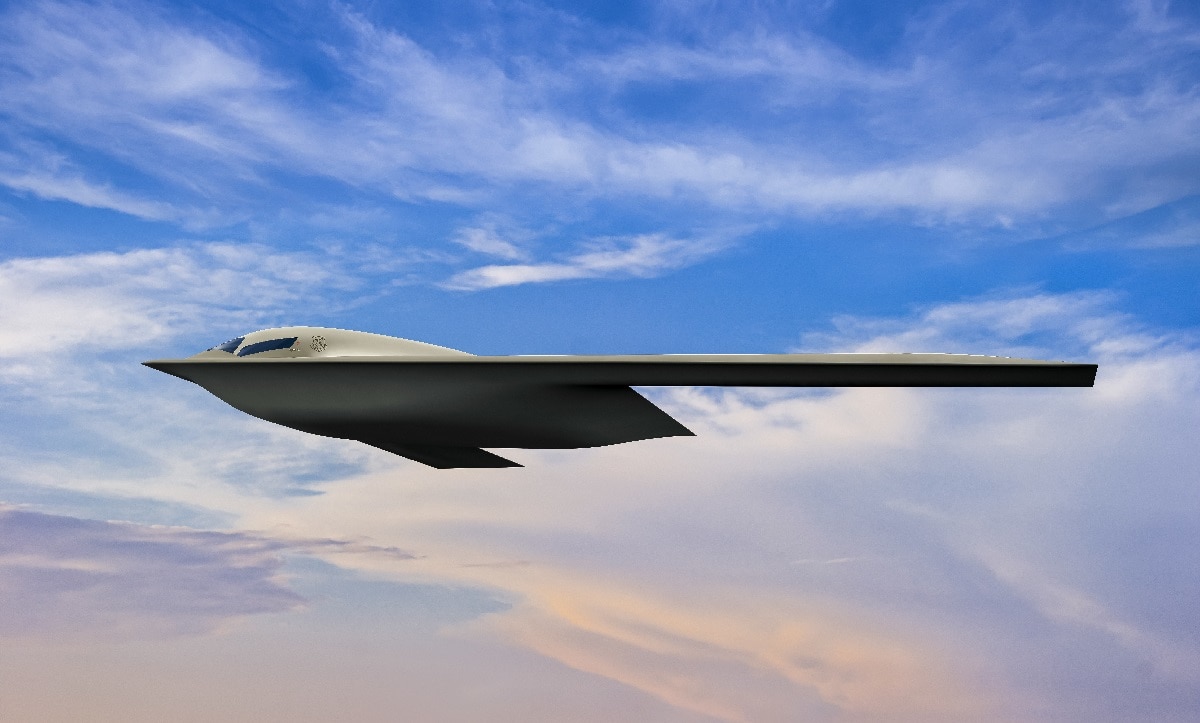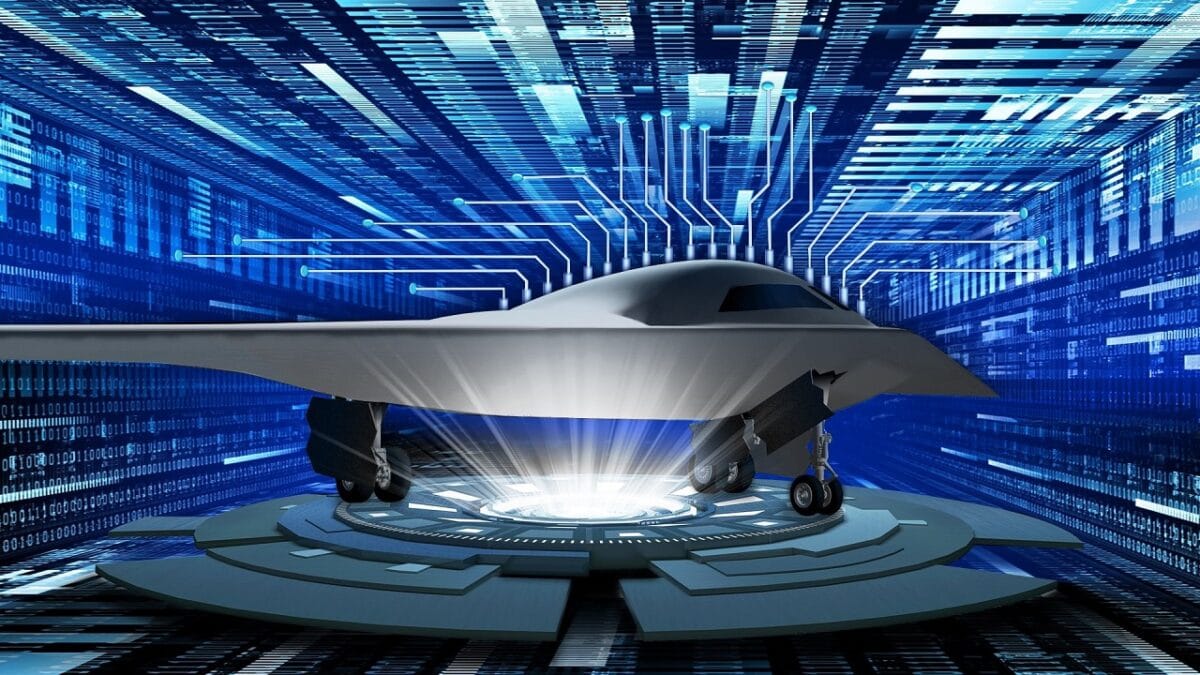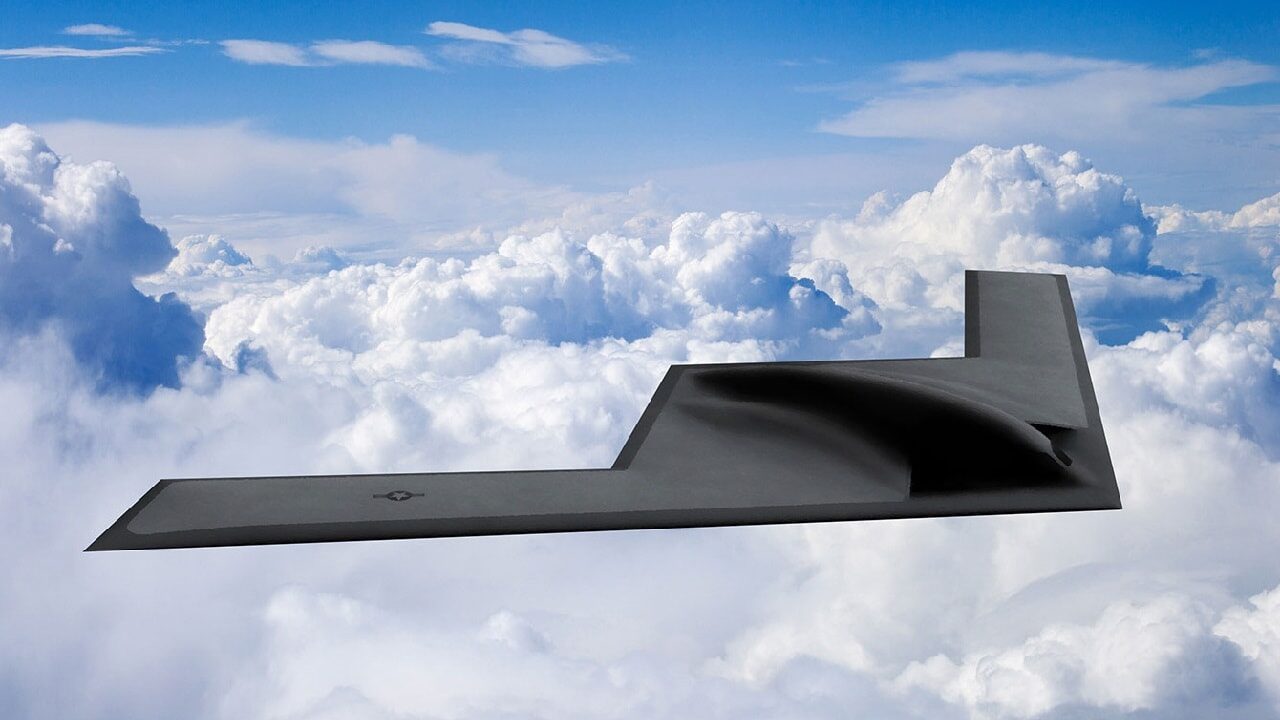These are heady times for the B-21 Raider program. All that development work is coming to fruition as one U.S. senator says it will be available for public viewing later this year. Work started on the secretive stealth bomber in 2014 and Air Force watchers have depended upon artist renderings to chart its path to its first unveiling. Senator Mike Rounds of South Dakota toured the B-21 plant in Palmdale, California in July. Rounds believes the B-21 could make its maiden flight in 2023.
Will It Be the Best Bomber Ever?
“The B-21 is one of the most advanced aircraft to ever be developed,” said Rounds in a news release. “We are getting closer to bringing this state-of-the-art platform home to Ellsworth Air Force Base. While much of the information I received on my visit is classified, I am pleased to report the B-21 is on time and on budget. The public can expect the B-21 to be revealed later this year. This aircraft will play a crucial role in the defense of our nation and will have a significant economic impact on the Rapid City area for generations to come.” Rounds also said a real photo of the B-21 will be shown soon.
South Dakota Will Be Its Home
Rounds is justifiably thrilled that the B-21 is to be based out of Ellsworth in South Dakota. He’s been a congressional champion for the bomber for years as he advocated for the airplane to be based in his home state. Senator John Thune, also of South Dakota, has also been a proponent of the B-21, but Rounds sits on the Armed Services Committee and has a critical role each year in the passage of the National Defense Authorization Act – the policy legislation for all things defense.
Better Than the B-2 Spirit
The Air Force has spent $20 billion on the development of the B-21 that will go through 2027. The airplane is manufactured by Northrop Grumman. The B-21 is planned to be a substantial upgrade of the B-2 Spirit. It will have better stealth attributes and rely on digital tools, modeling, and engineering practices. The B-21 should be more survivable and maneuverable than the B-2.
Stealth Dominance Is Assured
The stealth coatings on the aircraft are an upgrade too. The B-2 couldn’t sustain scratches and missing patches of the coatings, which hurt stealthiness and created more maintenance requirements. The B-21 stealth coating will be more resilient, according to Steve Sullivan, vice president of the strike division at Northrop Grumman, speaking during an interview with Breaking Defense.
Maintenance Times Reduced Due to New Software
The United States currently has around 187 bombers in the fleet but many of those are not ready to execute missions due to maintenance requirements. The B-21, on the other hand, will have easily updated software depending on battlefield conditions and needs, Sullivan said. The software upgrading process will feature cloud computing. This will keep maintenance constraints at a minimum. “We’re working toward the goal of eliminating the typical, long maintenance requirements that modern military aircraft require between missions by building an aircraft that is ready to fly every day,” Sullivan said.

Image: U.S. Air Force
Much to Like, But No Unmanned Wingman
The flying-wing designed B-21 is a conventional and nuclear bomber. It was initially thought to be able to fly with unmanned systems, but that capability was dropped and no loyal wingman drone will be used, so the B-21 can better focus on its ground strike missions. The bomber has modern electronic warfare and countermeasures and will be able to collect its own intelligence, surveillance, and reconnaissance data.
That Shape Looks Familiar
The fuselage will be shorter than the B-2 because the engine inlet is located closer to the middle of the airframe. The airplane is nearly 66 feet long. The B-21 is very wide with a wingspan of 164 feet. It is 16 feet high, and it weighs over 154,000 pounds without fuel or weapons.
The wings are swept back aggressively to create better agility and maneuverability. Weapons bays are internal for better radar-evading characteristics.
Not Fast But It Has Great Range
Two Pratt & Whitney turbofan engines push out 15,000 pounds of thrust. The maximum speed is 621 miles per hour. The bomber cruises at 466 miles per hour. The ceiling is nearly 50,000 feet and the airplane’s range is impressive at 6,835 miles.
It Can Deploy the Most Modern Nuclear Weapons
The bomber carries 50,000 pounds of munitions with nuclear bombs such as the B-61 variable-yield nuclear gravity bomb, the Long Range Stand-Off (LRSO) nuclear cruise missile, and other conventional precision-guided ordnance like the Long Range Anti-Ship Missile.
Determined to Be Green On Ground Tests
The B-21 went through successful ground tests this year. It was powered up and its subsystems showed passing marks during the evaluation. The final coatings and paints were applied. It also went through low-speed and high-speed taxiing.
What the Experts Told 19FortyFive About the B-21
“To be frank, the U.S. Air Force needs the B-21 Raider badly, as the B-2 bomber is starting to show its age being a child of the Cold War,” explained military expert Harry J. Kazianis, President of the Rogue States Project. “The U.S. military is a superpower because it can project power at any place and at any time – worldwide. The B-21 will ensure America can retain the vital capability for decades to come.”
Well…Not Completely On Time
While Rounds has stated the program has been on time, there have been some setbacks on the timeline. The Air Force originally forecasted it would fly in 2021. But the Covid-19 pandemic and long lead times for parts due to supply chain problems required the Air Force to adjust its expectations.

B-21 Raider Stealth Bomber. Image Credit: Industry Handout.
Nevertheless, the B-21 is exciting. It’s the most advanced bomber ever made, as Senator Rounds stated. It has a long way to go before serial production, but the public unveiling is filled with high expectations after years of artist-rendered images. The B-21 will be an important part of the U.S. nuclear triad. The B-21’s stealth capabilities will be put to the test in case of a two-front war with advanced Russian and Chinese anti-aircraft defenses such as the S-400. The B-21 should be able to confidently fly through this contested airspace and drop or launch its ordnance. This bomber can’t join the Air Force soon enough.
Now serving as 1945’s Defense and National Security Editor, Brent M. Eastwood, PhD, is the author of Humans, Machines, and Data: Future Trends in Warfare. He is an Emerging Threats expert and former U.S. Army Infantry officer. You can follow him on Twitter @BMEastwood.

